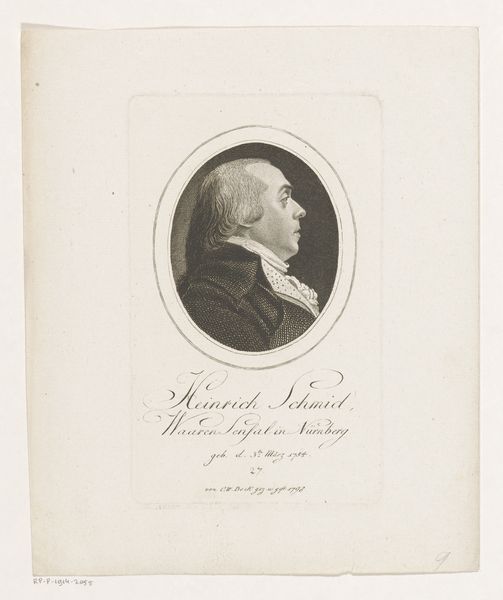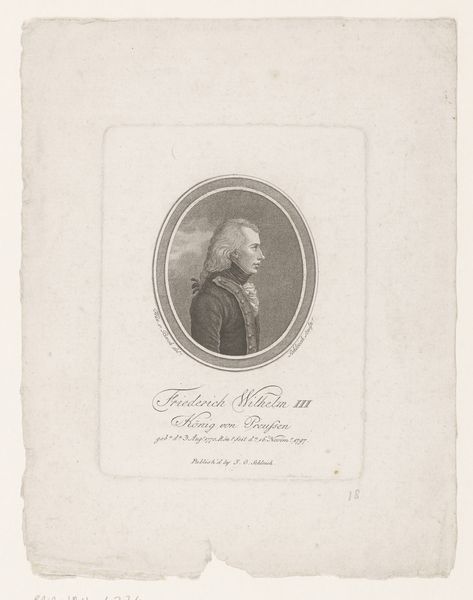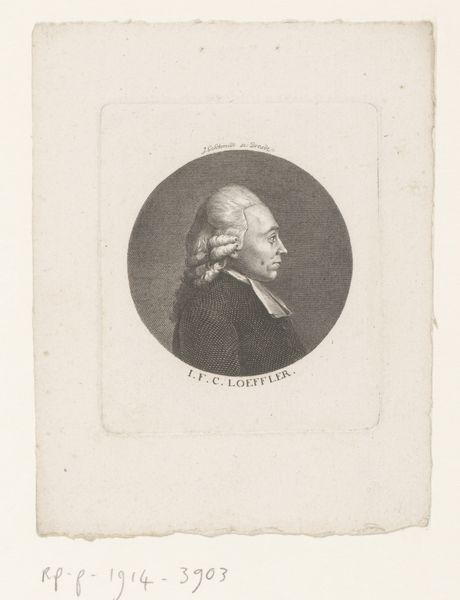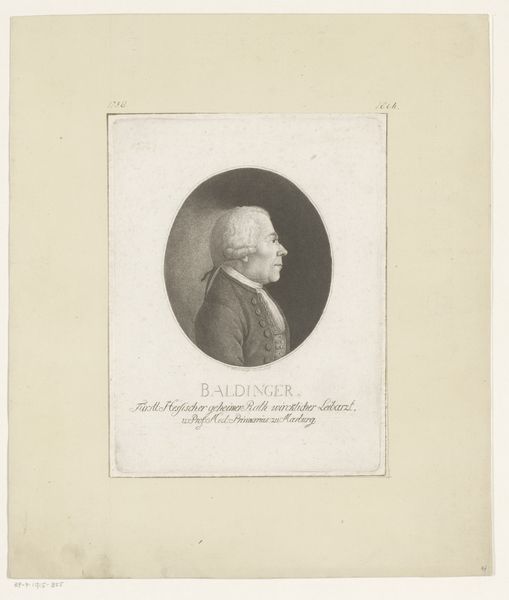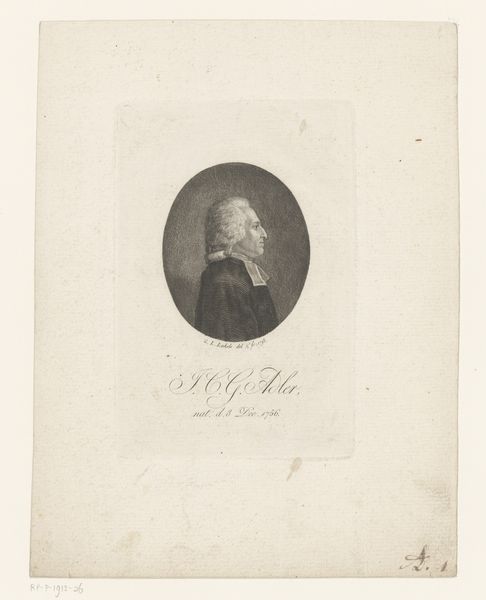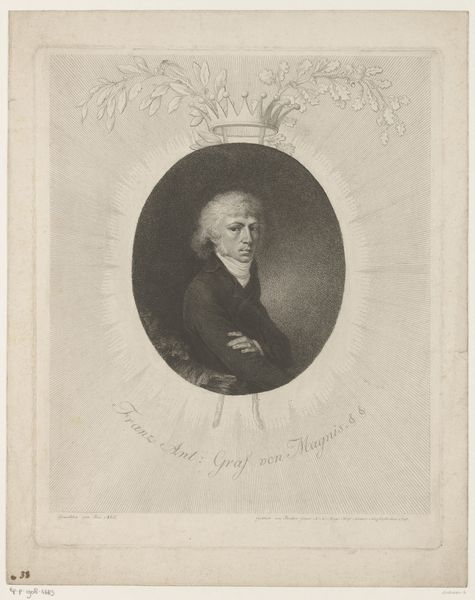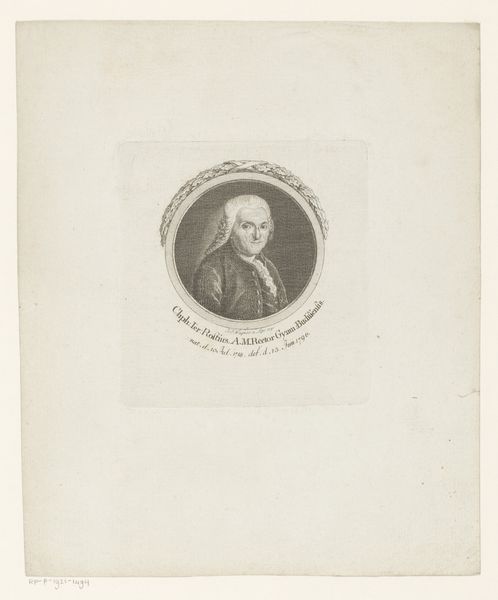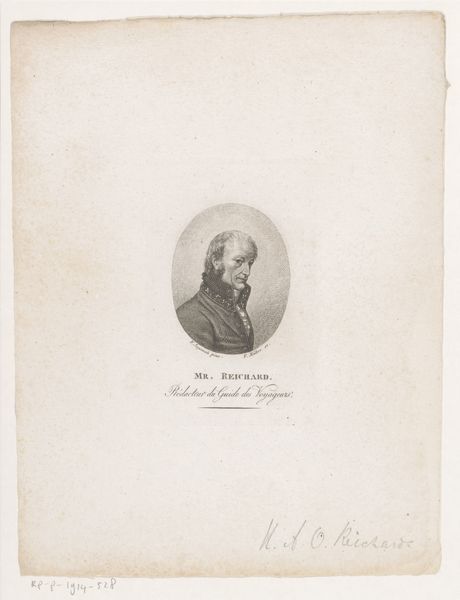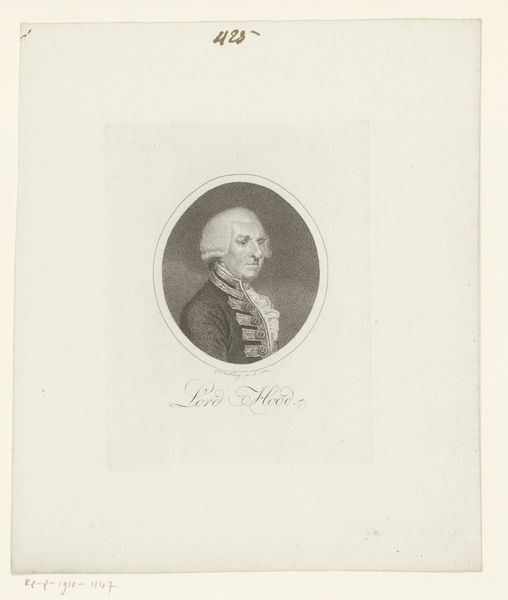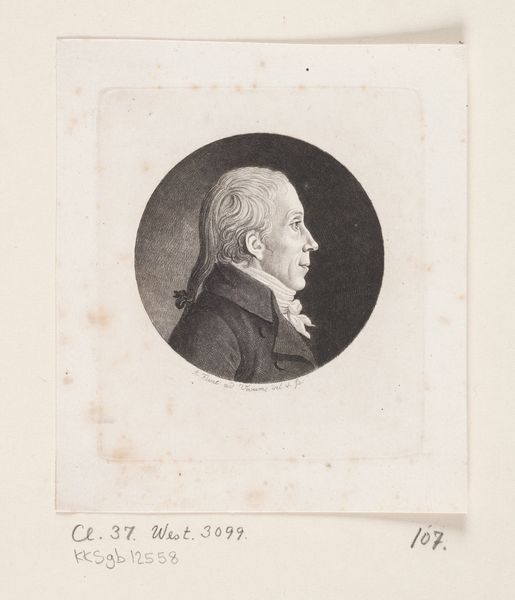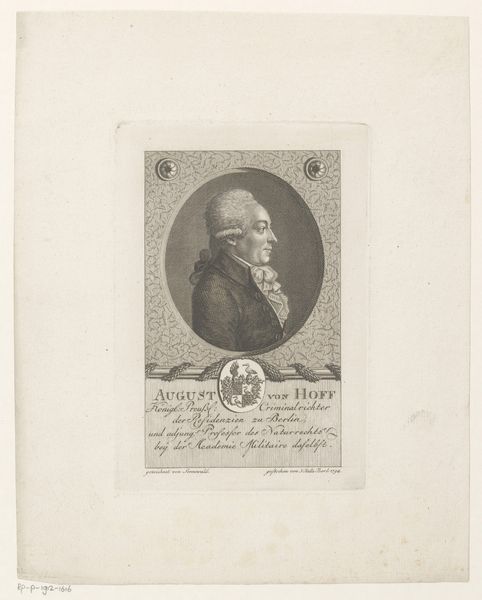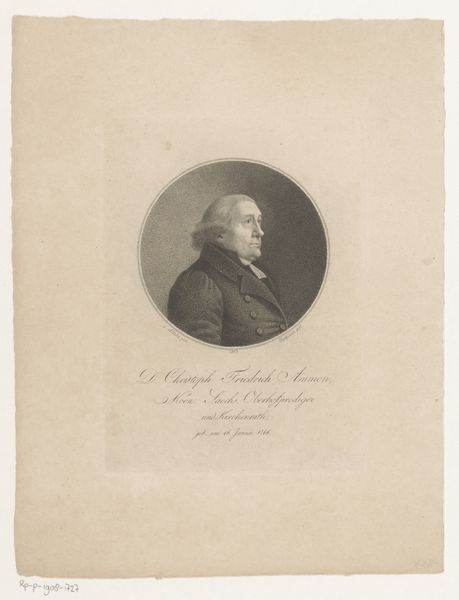
paper, engraving
#
portrait
#
neoclacissism
#
paper
#
engraving
Dimensions: height 164 mm, width 114 mm
Copyright: Rijks Museum: Open Domain
Curator: This engraving, dating roughly from 1790 to 1807, is entitled "Portret van Joseph-Henri baron de Jessé" by Franz Gabriel Fiesinger. It is currently held here at the Rijksmuseum. Editor: My first impression is of its coolness, a formal stillness. The textures seem very considered, almost precious in their refinement. What was the cultural climate that shaped such an image? Curator: Well, we see a very deliberate invocation of Neoclassicism here, which aligned with the political climate post-French Revolution. The baron is portrayed not as an aristocrat dripping in finery, but as a civic figure, framed within an oval border, like an ancient Roman bust. The controlled lines and sober tones are key features of this style. Editor: Yes, the line work! Notice how Fiesinger varies the etching density to convey the drape of the Baron’s cravat versus the more rigid tailoring of his coat. What papers would have been accessible at this time for such fine detail in engraving? And how were engravers situated within the art production system then? Curator: Engraving, with its capacity for replication, gained importance during this revolutionary period, enabling dissemination of ideals. Printmakers straddled roles—artists, technicians, and businessmen capitalizing on current events by capturing important people and places. They democratized imagery but depended on patrons like Baron Jessé, which gives us a sense of their ambivalent positioning in the shifting social structure. Editor: Right. And there’s also an undeniable fragility to paper as a medium; so susceptible to decay and external forces, requiring dedicated labor for its creation, as well as constant maintenance in collections to guarantee future access to its knowledge. The baron's portrait feels simultaneously permanent and fleeting, much like political power itself. Curator: I think that's a wonderfully evocative way to look at this piece, considering its historical implications. Thanks for drawing my attention to those fine details. Editor: Thank you. Focusing on materiality always highlights intriguing questions!
Comments
No comments
Be the first to comment and join the conversation on the ultimate creative platform.
